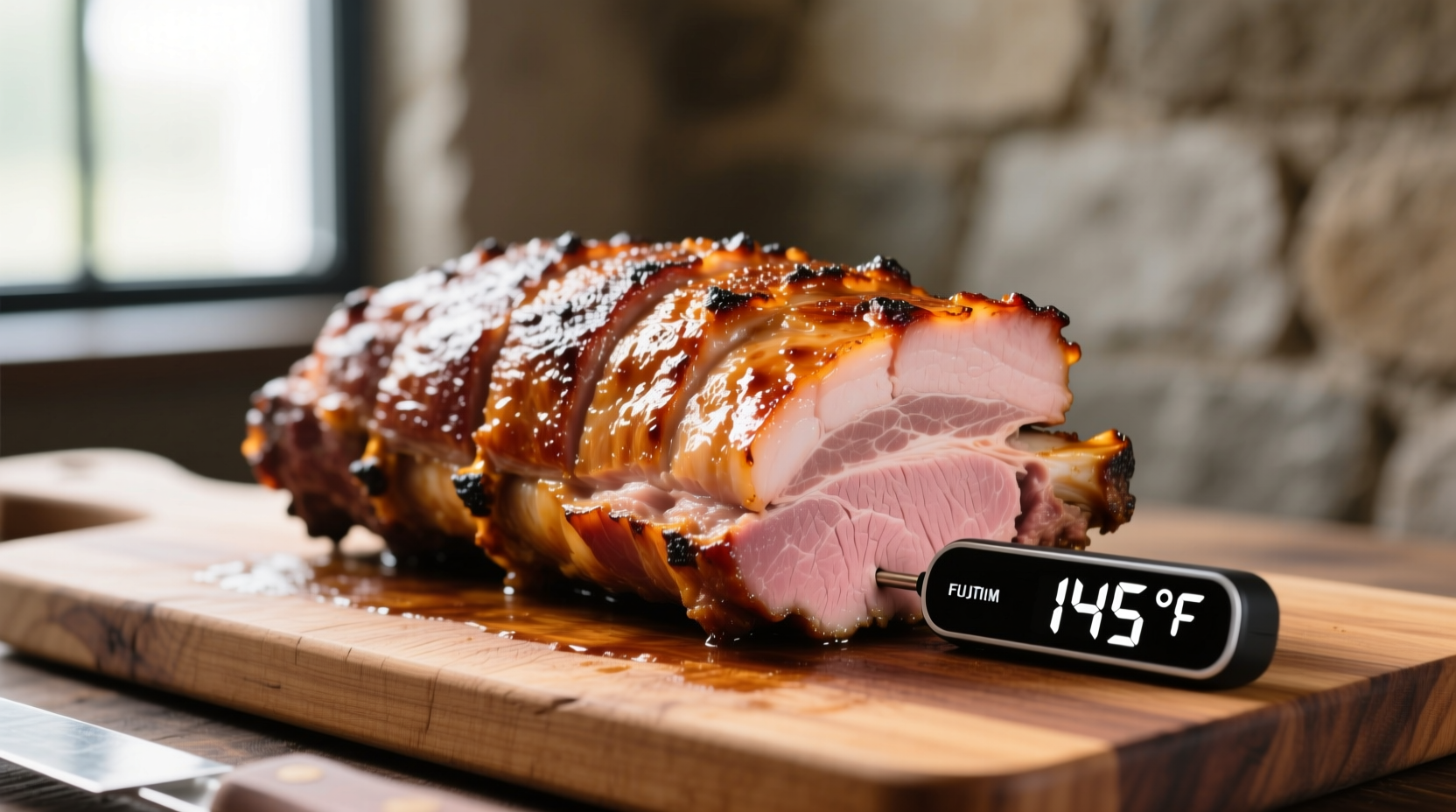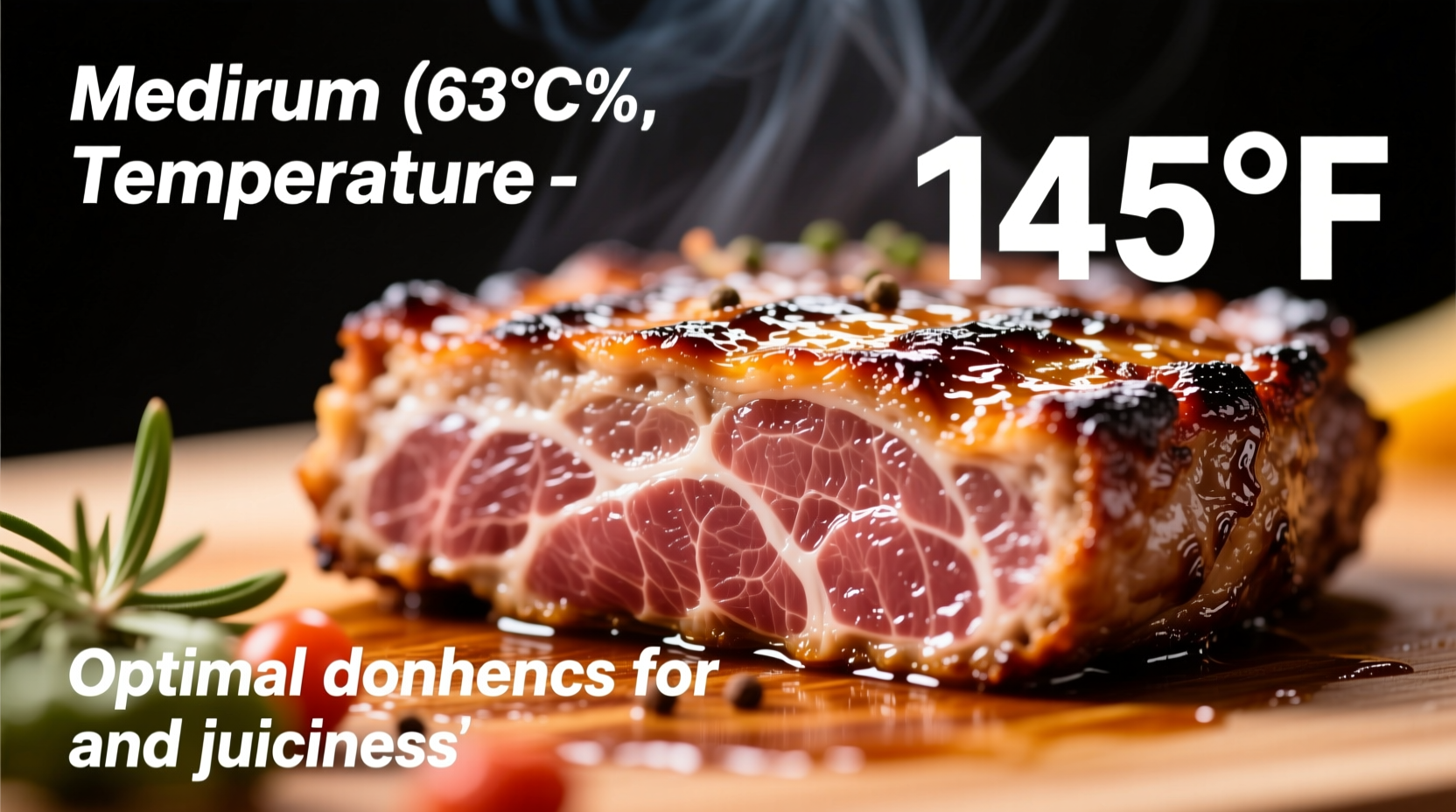The safe minimum internal temperature for pork loin is 145°F (63°C) measured with a food thermometer, followed by a 3-minute rest period. This temperature ensures food safety while maintaining optimal tenderness and juiciness according to USDA guidelines.
Why 145°F Is the Perfect Pork Loin Temperature
For years, home cooks were told to cook pork until it reached 160°F, resulting in dry, overcooked meat. Modern food safety research has changed this recommendation significantly. Today's pork is raised differently than decades ago, with stricter pathogen controls making lower cooking temperatures perfectly safe.
Step-by-Step Cooking Process for Perfect Pork Loin
Preparation: Setting Up for Success
Before you even turn on your oven or stove, proper preparation makes all the difference:
- Remove pork loin from refrigerator 30 minutes before cooking to bring it closer to room temperature
- Dry the surface thoroughly with paper towels for better searing
- Season generously with salt, pepper, and your preferred herbs
- Consider dry brining (salting 1-24 hours in advance) for enhanced flavor and moisture retention
Monitoring Temperature: The Critical Phase
Using an accurate thermometer is non-negotiable for perfect results. Insert your probe thermometer into the thickest part of the meat, avoiding bone or fat pockets.
| Temperature Range | Texture & Appearance | Recommendation |
|---|---|---|
| 130-135°F | Rare, very juicy but potentially unsafe | Continue cooking |
| 140-144°F | Medium-rare, pink center, extremely juicy | Remove from heat, will rise to 145°F during rest |
| 145°F (target) | Medium, slight pink, optimal tenderness | Remove from heat, begin 3-minute rest |
| 150-155°F | Medium-well, less pink, beginning to dry | Acceptable but not ideal |
| 160°F+ | Well-done, dry, gray throughout | Overcooked - avoid if possible |
Resting: The Often-Missed Essential Step
After reaching 145°F, remove your pork loin from heat and let it rest for 3-5 minutes. During this time:
- Internal temperature will continue to rise 5-10°F (carryover cooking)
- Juices redistribute throughout the meat
- Proteins relax, resulting in more tender meat
- Cover loosely with foil to retain heat without steaming the surface

USDA Guidelines Evolution: How Pork Cooking Temperatures Changed
Understanding the timeline of pork temperature recommendations helps explain why 145°F is now considered safe:
- Pre-2011: USDA recommended cooking pork to 160°F due to concerns about trichinosis
- May 2011: USDA updated guidelines to 145°F with 3-minute rest after research showed modern pork production had virtually eliminated trichinosis risks
- 2016: National Pork Board officially adopted the 145°F standard in all educational materials
- Present: 145°F remains the official recommendation, with the National Pork Board stating “Pork cooked to 145°F is perfectly safe, delicious, and juicy”
This change reflects improvements in pork production and a better understanding of food safety science. According to the USDA Food Safety and Inspection Service, the 145°F standard with rest time provides a 6.5-log10 reduction of pathogens, well above the required 6.0-log10 reduction for food safety.
Special Considerations for Different Cooking Methods
While the target temperature remains consistent, different cooking methods require specific approaches:
Oven Roasting
For best results when roasting pork loin in the oven:
- Preheat oven to 400°F for initial sear, then reduce to 325°F
- Use a roasting rack to allow air circulation
- Check temperature 10-15 minutes before expected finish time
- Remove at 140°F to account for carryover cooking to 145°F
Grilling
When grilling pork loin:
- Create two-zone fire (direct and indirect heat)
- Sear over direct heat, then move to indirect heat to finish
- Close lid when cooking over indirect heat
- Check temperature frequently as grill temperatures can fluctuate
Sous Vide
For precision cooking with sous vide:
- Set water bath to 140-142°F for medium-rare finish
- Cook for 1-4 hours depending on thickness
- Finish with quick sear to develop crust
- No additional rest time needed (already pasteurized)
Common Mistakes That Ruin Perfect Pork Loin
Avoid these frequent errors that lead to disappointing results:
- Guessing instead of measuring: Visual cues are unreliable; always use a thermometer
- Skipping the rest period: Cutting too soon releases precious juices
- Overcooking for safety: Modern pork doesn't require 160°F for safety
- Ignoring carryover cooking: Remove meat 5°F below target temperature
- Using the wrong thermometer: Instant-read is best for thin cuts like pork loin
Food Safety Beyond Temperature
While temperature is critical, proper food handling throughout the cooking process matters too:
- Cross-contamination prevention: Use separate cutting boards for raw meat and other ingredients
- Hand washing: Wash hands thoroughly after handling raw pork
- Sanitizing surfaces: Clean all surfaces that contacted raw meat with hot, soapy water
- Proper storage: Keep pork refrigerated below 40°F until ready to cook
According to the Centers for Disease Control and Prevention, following these additional safety practices alongside proper cooking temperatures provides the best protection against foodborne illness.











 浙公网安备
33010002000092号
浙公网安备
33010002000092号 浙B2-20120091-4
浙B2-20120091-4